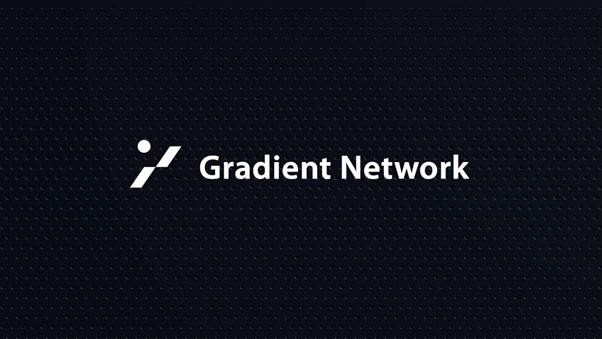The crypto landscape in 2025 continues to embrace real-world applications of blockchain through DePIN (Decentralized Physical Infrastructure Networks). One of the most talked-about projects in this space is Gradient Network, a decentralized computing protocol built on Solana.
Gradient aims to transform idle devices into valuable computing nodes that collectively power AI and data processing tasks. Its airdrop program has drawn global attention for being easy to join, community-focused, and transparent about rewards.
This article provides an up-to-date overview of the Gradient Network airdrop, its evolution from Season 1 to the next phase, key features such as the Parallax AI model, funding news, and the roadmap that defines Gradient’s future direction.

Disclaimer: MEXC is not affiliated with, nor does it endorse or organize, the airdrop event mentioned in this article. The airdropped tokens are not currently listed on MEXC, and there are no official plans to list them at this time. Please exercise caution and conduct your own research before participating in any airdrop or token-related activity.
Table of Contents
What Is Gradient Network?
Gradient Network is a decentralized compute infrastructure designed to utilize underused devices worldwide. By converting personal computers, laptops, and browsers into Sentry Nodes, Gradient builds a scalable and low-cost network for distributed computing.
Unlike traditional cloud providers that rely on centralized data centers, Gradient enables edge computing, bringing computational power closer to end users. This design reduces latency, optimizes bandwidth, and enhances privacy.
Core Components
- Sentry Nodes: Lightweight browser extensions that connect user devices to the network and monitor uptime.
- Proof of Connectivity (Taps): Verifies active and stable connections from participating nodes.
- Adaptive Orchestration: Dynamically distributes computing tasks based on availability and performance.
- Decentralized Edge Compute: Executes workloads across geographically diverse nodes to improve efficiency.
Gradient’s mission is to make decentralized computing accessible to everyone, rewarding users who contribute connectivity, compute power, and data integrity.
Overview of the Gradient Network Airdrop
The Gradient Network airdrop rewards community members for participating in network development, testing, and uptime contributions. It follows a points-based system where users earn EXP points instead of tokens. These points may later be converted into token rewards when the network’s Token Generation Event (TGE) occurs.
Airdrop Structure
- Reward Type: EXP Points
- Blockchain: Solana
- Season 0: September 2024 – April 2025
- Season 1: April 15 – August 28 2025
- Current Status: Season 1 completed; next phase focuses on rewarding network intelligence
The first season rewarded users primarily for uptime and Proof of Connectivity, while the upcoming phase transitions toward data and compute quality contributions, a major evolution in the project’s reward mechanics.
Season 1 Completion and Transition to Network Intelligence
Season 1 officially ended on August 28, 2025, marking a significant milestone for the Gradient ecosystem. The project has now shifted its focus from rewarding pure uptime to emphasizing network intelligence, a model that values the quality of contributions rather than the quantity of online hours.
Key Changes in Reward Mechanism
- From Connectivity to Intelligence: Rewards now favor meaningful compute and data contributions over passive uptime.
- Enhanced Validation Metrics: Performance, reliability, and network responsiveness now influence EXP accumulation.
- Reduced Passive Farming: The change discourages “idle farming” behavior and prioritizes active participation.
This transition represents Gradient’s evolution from an experimental connectivity testbed into a more advanced compute network capable of running real workloads.
How to Join the Gradient Network Airdrop
Even after Season 1, users can still join Gradient’s ecosystem and earn EXP through new tasks and programs.
Step-by-Step Participation Guide
- Visit the Official Website: Go to https://gradient.network and select “Launch App” to begin.
- Sign Up or Connect Your Wallet: Create an account or connect your Solana wallet. Verify your email or social media if prompted.
- Install or Update the Sentry Node Extension: The browser extension acts as your participation tool.
Important: Update to Sentry Node version 1.1.4 to ensure accurate EXP tracking. Older versions no longer record activity properly.
- Stay Active and Engage: Maintain regular uptime, interact with the Parallax AI model, and participate in community events for additional EXP.
- Join the Community Channels: Follow Gradient on Discord, X (Twitter), and Telegram for ongoing missions, updates, and security alerts.
New Features and Programs in Late 2025
Gradient has expanded far beyond its original connectivity test. The development team introduced new tools and engagement programs that signal the network’s shift toward practical compute usage.
1. Parallax: Gradient’s AI Model
Parallax is Gradient’s native AI model that allows users to interact, query data, and contribute meaningful insights to improve model accuracy. By using Parallax, participants help refine the network’s intelligence layer, a crucial step in moving from uptime testing to compute-based operations.
2. Edge Host Pilot Program
The Edge Host Pilot Program invites technically capable users to run Edge Hosts, devices that handle compute workloads for the network. This initiative aims to create a distributed backbone that supports AI and data-intensive tasks.
Participants in this program may receive additional EXP bonuses and early access to future token allocations once the compute layer becomes fully active.
Gradient Network Roadmap
Gradient’s roadmap remains transparent and community-driven, focusing on scalability, security, and real utility.
Phase 1: Connectivity
- Deploy Sentry Nodes globally to test uptime and network reach.
- Build Proof-of-Connectivity infrastructure (Taps).
- Engage the first wave of community contributors.
Phase 2: Compute Aggregation
- Transition to compute-level contributions.
- Launch pilot AI workloads through Parallax.
- Establish Edge Host nodes to handle higher compute demand.
Phase 3: Intelligent Orchestration
- Integrate adaptive scheduling for real-time task allocation.
- Optimize resource management with AI-driven orchestration.
- Partner with DePIN and Solana ecosystem projects to expand adoption.
Each phase builds upon the previous one, reflecting a clear progression from proof-of-concept to production-grade compute infrastructure.
Funding and Backers
In June 2025, Gradient Network secured $10 million in funding led by Multicoin Capital, with participation from Pantera Capital, Sequoia Capital, and other major investors.
This funding round validated Gradient’s potential within the DePIN sector and provided the resources needed to scale its compute network, enhance the Parallax AI model, and strengthen community reward programs.
The backing from globally recognized funds significantly enhances Gradient’s credibility and signals institutional confidence in decentralized computing.
Why Gradient Network Is Gaining Attention
1. Strong Momentum in DePIN
The DePIN narrative continues to dominate the infrastructure side of Web3. Gradient stands out by addressing computational capacity, a critical bottleneck for AI-driven and Web3 applications.
2. Simple Entry Point
Anyone with a laptop or browser can join. This low barrier of entry has fueled viral adoption and community participation, attracting tens of thousands of node operators.
3. Sustainable Reward Evolution
By shifting from passive uptime to active intelligence contributions, Gradient sets itself apart from short-lived airdrop programs.
4. Transparent Roadmap
The team communicates regularly through community letters, offering a realistic view of milestones and challenges rather than over-promising returns.
5. Strong Investor Confidence
With top-tier backers and visible funding, Gradient is better positioned to execute its ambitious long-term roadmap.
Potential Risks and Considerations
Unproven Compute Scalability
While the concept is promising, the compute layer remains under development. Real performance metrics have yet to be fully tested at scale.
Tokenomics Still Undisclosed
The EXP-to-token conversion ratio, vesting model, and total supply are still TBA (To Be Announced). Participants should temper expectations until official documents are published.
Security and Phishing Risks
Gradient’s popularity has led to fake browser extensions and social accounts. Always download the Sentry Node extension directly from gradient.network and verify official communication channels.
Airdrop Saturation
As more users join, EXP distribution becomes increasingly competitive. Quality participation is now prioritized over simple volume.
Regulatory Uncertainty
Token distributions and DePIN participation rewards may face differing rules depending on region. Users should verify compliance locally.
Note: This content is for educational purposes only and does not constitute investment advice.
Expert Outlook: Gradient and the Future of Decentralized Compute
The decentralized compute race is heating up, with projects like Render, Grass, and Akash exploring similar domains. Gradient differentiates itself through its browser-based accessibility and integration with Solana’s high-speed infrastructure.
Its focus on network intelligence suggests a shift toward meaningful contributions, a move that could align the project more closely with real-world AI computation.
If Gradient succeeds in deploying scalable edge computing and maintaining an engaged community, it could become one of the foundational protocols in the DePIN economy. However, execution, transparency, and continuous innovation will determine its staying power.
Final Thoughts
The Gradient Network airdrop illustrates how DePIN projects are redefining blockchain utility. What started as a simple browser-based connectivity test has evolved into a complex, intelligent compute ecosystem.
With Season 1 completed and a transition toward network intelligence rewards, Gradient is entering a more mature stage focused on delivering real-world compute capacity. The $10 million funding round, investor confidence, and new features like Parallax AI and Edge Host Pilot Program show tangible progress beyond speculation.
While no token distribution has occurred yet, Gradient’s transparent approach and consistent communication inspire cautious optimism. Participants should continue engaging responsibly and stay alert for official updates on the Token Generation Event.
Gradient’s story is still unfolding, but it’s already a model for how DePIN projects can evolve from hype to genuine utility.
Frequently Asked Questions (FAQ)
When did Gradient Network’s Season 1 end?
Season 1 concluded on August 28, 2025, completing the Proof-of-Connectivity phase. The next stage rewards “network intelligence”, valuable data and compute contributions.
Has the Gradient token launched?
No. As of October 2025, there has been no token generation or distribution. All rewards remain in EXP points until the official TGE announcement.
What is the Parallax AI model?
Parallax is Gradient’s in-house AI system that allows users to interact, submit data, and refine model learning. It also helps measure the value of each node’s compute contribution.
How can I become an Edge Host?
You can apply through the Edge Host Pilot Program on the Gradient website. Participants with suitable devices can host edge compute nodes and earn additional EXP.
Who are Gradient’s investors?
Gradient Network raised $10 million from Multicoin Capital, Pantera Capital, Sequoia Capital, and other strategic funds in June 2025.
Is it safe to use the Sentry Node extension?
Yes, if downloaded from the official site. Never install extensions from third-party links or unknown domains.
When will tokens be distributed?
The team has not confirmed a date. Token distribution details remain TBA, and users should monitor official channels for verified updates.
What phase is the network in now?
Gradient is transitioning from Phase 2 (Compute Aggregation) to Phase 3 (Intelligent Orchestration), focusing on real AI and compute task execution.
Join MEXC and Get up to $10,000 Bonus!
Sign Up


